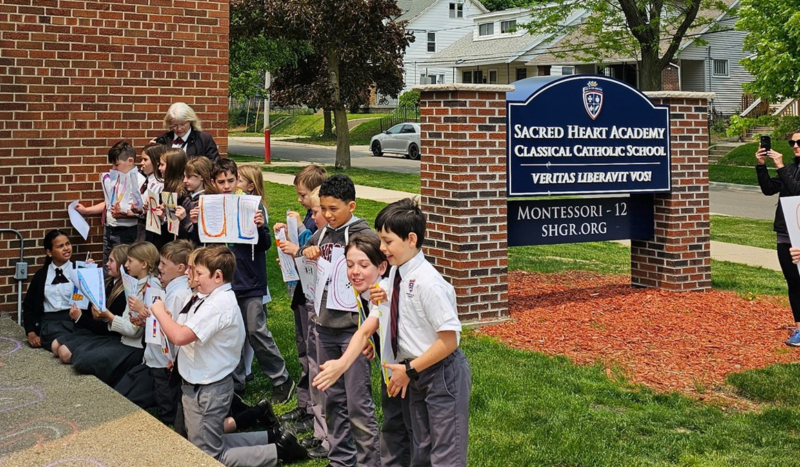
Sacred Heart of Jesus, Grand Rapids / Facebook
CV NEWS FEED // A priest from Grand Rapids, Michigan, recently explained in an op-ed published in the Wall Street Journal that homeschooling families revitalized his dying parish.
Father Robert Sirico, the pastor emeritus of the Sacred Heart of Jesus parish, wrote that when he became pastor in 2012, the parish was “on the brink of collapse.”
The church had been established by Polish immigrants in 1904, but many of the parishioners either moved to suburban areas or left the faith, he said. The school, once with an enrollment of 900, was down to 68 students.
The bishop gave Fr. Sirico the option of closing the school, but the pastor asked to first investigate the situation.
“As I got to know the parishioners, I discovered a diverse and dynamic community,” Fr. Sirico wrote. “There were elderly members, young families, university students and a group of parents who home-schooled their children, many of whom attended the traditional Latin Mass.”
He then related a formative experience in which he asked a mother if she was willing to consider enrolling her children in the parish school.
“Father, our children are the most precious things in our lives,” she told him. “We want them to receive the faith we grew up with. I’m not sure your school can offer that.”
Fr. Sirico reflected, “I started asking: What weren’t we offering?”
As a result of the conversation, he started making changes to the school. He first encouraged parishioners to see the school as part of the parish’s mission to spread the Gospel. He requested that students, parents, and faculty attend daily Mass together.
He reintroduced uniforms and got rid of the federal cafeteria programs “to regain independence from regulatory restrictions.” Instead, parents were allowed to prepare meals for the students as a group. Parental involvement in meals created a stronger sense of community, according to Fr. Sirico.
He also made sure to increase the reverence of Masses. The school stopped using public school curriculum and ensured that the teachers supported the Catholic faith.
The priest explained that the school “removed public-school teachers funded by the state, whose employment required us to remove religious symbols in the classroom.”
He added, “That was a costly but necessary decision to preserve our Christ-centered identity.”
Fr. Sirico also instituted a hybrid program, allowing homeschool students to attend the school part-time.
“Home-schooled students could attend two days a week, participate in Mass, wear the uniform and integrate with full-time students,” he said. “This model, coupled with a revised curriculum, transformed our school’s culture.”
Many of these families started attending the school full-time after they grew to trust the education, according to Fr. Sirico.
“They brought with them a deeper Catholic identity and a renewed sense of mission and parental involvement,” he wrote. “Their example attracted more families, locally and from outside the state.”
The school is now up to 400 students and has waiting lists for several different grades.
“The success of our school’s refounding came from listening to families and adapting to their spiritual and educational needs,” Fr. Sirico wrote.
The priest concluded, “Sacred Heart’s revival is proof that when we listen to families and offer them what the world can’t — a truly Catholic education — we don’t merely preserve our schools; we transform them into beacons of faith for generations to come.”

